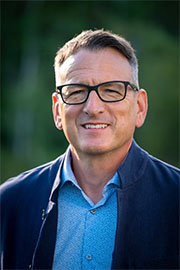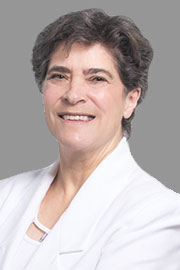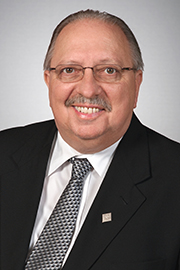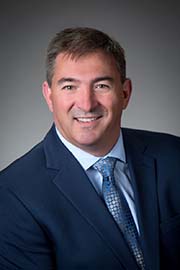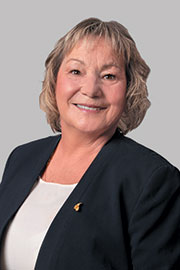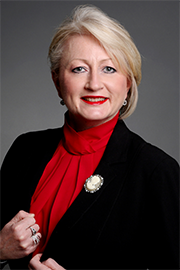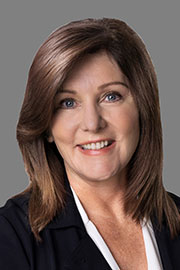- May/10/23 4:00:00 p.m.
I am glad to be able to again take my place in this House and add, hopefully, some thoughtful comments as we’re again debating Bill 75, which is the Queen’s Park Restoration Act. I’m going to take a bit of liberty during this debate to—I’m going to stay focused on the title. I’m going to talk about the restoration side, recognizing, though, that this bill is actually quite specific in what it set out to achieve and we hope will be successful in achieving the creation of a specific secretariat that will—I’ll use the term loosely—oversee the next steps for this Legislature in terms of that restoration, rehabilitation of parts of it. I’m going to focus a bit on the restoration side and what comes after this bill, as I think many members are interested in.
As Chair of the Standing Committee on Procedure and House Affairs, I can’t go anywhere without running into someone who has a suggestion about the future of the building, whether that is an accessibility technology—“Oh, you and the committee need to talk about this; this is something Queen’s Park should have”—or it’s something about solar panels and about a sustainable future for the building or what that looks like. Everyone, I think, is quite interested in the what could be, what should be or the emotional side or the—not to diminish when I say sentimental side, but the meaningful aspects that folks want to either see protected or highlighted. It is my privilege to work with the committee on this project and others. I think it’s an interesting opportunity for the committee to figure out what its roles and responsibilities are going to be, because it’s a significant umbrella, when its Standing Committee on Procedure and House Affairs—things that have to do with the workings of this space, or that precinct properties may come before the committee, which is why we are talking about, broadly, the restoration.
Specifically, this bill came before committee—we didn’t have a lot of community interest in this part. I think we anticipated we were going to have a long line out the door of people wanting to come to committee to present about this bill, but I think folks watching are maybe more tuned into what will come next, the story that unfolds, where this building will go, what future parliamentarians will do once it’s decanted—decant, pouring off the wine into another space—how the operations will go, what it will cost, what it will look like, if it will be changed, all of that sort of thing. But the specifics of this bill, with people coming and weighing in—we didn’t have a lot of that. The government put forward a few amendments that the committee discussed. We had briefings. And we have an understanding that there are a few things that we’re hearing from the operations side of the building. Those who keep us safe and secure wanted to make sure that there were accommodations but factored in when we have a future precinct, an existing precinct, that transition—what that looks like and all of that. The public—we didn’t hear from them; we didn’t have folks signing up for that part of committee. I would guess that the next part, as the committee continues to undertake the work of the study, is when we’re going to have that kind of enthusiastic and invested engagement.
I think in the first speech that I gave about this, I went through the first interim report on the study of the rehabilitation and restoration of the legislative precinct that the committee had done. If you look through that report, you’re going to see a lot of pictures, behind the scenes, with wiring technology challenges, the potential for system breakdowns and whatnot, and the nuts and bolts of the space. But there are a lot of things that aren’t in those pictures about why this work is going to be undertaken. It’s going to be a big project.
We did hear, though, from one group—and I’ll share that as I stay focused on Bill 75. It was a brief submitted to our standing committee by Equal Voice, an organization that works to elect more women at all levels of government. Their recommendation to the committee and, broadly, to the House, “We recommend Ontario develop physical spaces that support requirements for hybrid participation and family-friendly considerations to increase the diversity of parliamentary participation.”
They have said this “is an excellent opportunity for the Ontario Legislature to take full advantage of restoration in a physical and functional sense that promotes inclusivity and full participation.... The physical building can impact how work is carried out, and we encourage restoration considerations that promote hybrid participation and family-friendly infrastructures....
“Hybrid proceedings are part of gender-sensitive Legislatures,” as they recommended.
They said, “Physical modernizations and updates are needed to accommodate family realities of MPPs....
“Hybrid proceedings and family considerations have the potential to attract more women to politics.”
And they’ve given stats and all sorts of—well, I’m not meaning to cut it short, but this is the kind of thing that I think we anticipated at this stage but we know is going to move forward as the committee continues to do its work, that we’re going to hear from people on different issues and, I’ll say, through different lenses.
Some of the work that we are currently undertaking is reaching out to Indigenous partners, to First Nations, to start that process, a bit of an introduction to the work of the committee and then a more formal process inviting input. But what I’ve already heard from some of the calls that I’ve been making is such an interest in walking these halls, in feeling this space, in touring to actually see what is here, not behind the scenes in the wiring, but experiencing this building and grounds as-is now—because I think we’re going to find, with any group that is interested in giving us feedback, they’re going to want to know what’s already here, and they’re going to experience it in a way that I don’t, that you might not, Speaker, that others of us don’t, and have considerations and have thoughts to share with us, and I think the committee is looking forward to doing the work of gathering that information, maybe making recommendations, maybe reporting it back to this House. So if members of this House have good ideas about what they would like the committee to consider, send it our way. I think we’re at the very early stages of what is going to be a very big and hopefully meaningful project, frankly.
But when it comes to accessibility, as Equal Voice had referenced—well, my colleague from Hamilton Centre experiences this space in a very different way than I do. We have seen some modifications of the physical chamber and the building broadly to ensure that she can access the work that she does in this building. We want to ensure that people can work here in the future with different accessibility needs. It’s about entering the space, using the space, hearing the space, being heard.
One of our colleagues has raised the issues around French-language translation and how people can watch the Legislature, and that is something that we are facing currently, but what are going to be challenges that we face in the future? And, also, what does accessibility mean? It isn’t only a matter of getting into the building or getting around the building; it’s also who feels welcome here, who is welcome here, how is this building designed and for whom.
I know that I have colleagues in this room—this is not a partisan comment: There are MPPs on both sides of this House who may have hidden disabilities who know that they access this space slightly differently; there are people who have been elected and are not welcome and never were. A long time ago, women were a new thing in this place, and they were not welcome. Who else has not been welcome, historically? But I will say that anybody who isn’t welcome in this space, who takes their seats, whether because of their family story or their cultural background or their ideology or understanding or beliefs or any of that, this building is going to be carving their names into the wall. This building will forever have their names, and that is something that I think is the power of this space, that each person who is elected here has earned being here. What they do with it is up to them, but their name will be carved into the wall.
That’s a heck of a fight just to get here. We want more people to run for public office; we want more people to imagine that they can. Equal Voice mentioned family-friendly. I have met some of the members’ children, and I cannot get over how fast they grow. I’ve seen some pretty tiny ducklings that all of a sudden now look to be teenagers, and I think: What just happened? That’s a special part of being here, getting to know each other a little bit and some of the family pieces. But there are a lot of folks who never put up their hand to run for office because they might have—whether it’s child care needs or balancing things. That will always be true, that people will always have their own individual decisions to make, but what are we doing about it here in terms of child care, in terms of accommodations that might be raised as they come up?
Every single one of us in this House is elected to do the same job, but we do it all so differently. There are some people who keep a day of the weekend kind of sacrosanct, that that’s family time, and others of us work seven days a week, 24 hours a day, or somewhere in the middle. What will future parliamentarians look like? Who are they going to be? Can they get here? And when they get here, how will they experience the space? All of this is sort of pie-in-the-sky stuff, and a little bit like, “Oh, that would be neat,” but one of the things that the committee learned when we went to Ottawa was that we’re not designing the space for what we wish had: “It sure would be great to have a charging port in the desk”—well, for what technology? What is that charging port going to look like? It’s not about future-proofing this space for the foreseeable future; it is making sure that this building can continue to change as needed.
We’ve talked about the heritage, we’ve talked about the grandeur of this space, but I have been proud to stand here and say, “Yes, there is beauty and there is grandeur, but there is oppression and there is some pretty ugly stuff up on the walls.” Until it’s pointed out to you, you might be like, “Oh, that’s a fun carving,” and then you have someone else explain to you what that message is, what that means not just in Latin, but what the story tells. Maybe we preserve, or maybe we explain, or maybe we change, and that’s for not just the committee, that’s for the future to decide with this work.
Even walking through the halls—have you ever done a walking tour of this building and looked at the art? There’s some dark stuff up on the walls. Not to say it shouldn’t be on the walls, but there are some things that—can we not have an explanation? We as a building have a significant collection of art that is off-site, and I think that there’s an opportunity to show it or to share it or to tell the story or to find it a better home if it’s not for us. How do we make space for new art, new stories, better stories—the real stories? I think that this Legislature will have a lot of that work to do as we go forward broadly.
We’re debating Bill 75, but it is the restoration act, and I think that act of restoration is not just bringing it back to its former glory, but I would say—and I’m taking liberty, because in the seat as the Chair of the committee, I have to be non-partisan—whatever; I’m off-leash right now, saying what I want. I want us to realize that it’s not just a restoration, it is maybe an opportunity to reimagine. And I would say that we have a responsibility.
We’ve heard a bit about—and not enough, but we had a question asked earlier about equity, about colonization. We talked about or briefly mentioned how we work towards a Legislative Building that will be experienced more positively in the future. So inviting people to come through, feel the space, make recommendations—I know the committee is looking forward to gathering that information. What is done with it could be 10, 15, 20 years down the road; I don’t know. But there is a lot of important work ahead of us, I would say, not just as a committee but as a Legislature.
As you’re hearing from groups in your community, whether it’s the landscape architects who were here the other day—we have Queen’s Park and the grounds. We’re going to have an area where we decant—what do you say, decant to, decant into—where we will be working for a while. What does that space need to be? All of this, as you are hearing from people in your communities with ideas, with concerns. We’ll find ways to funnel that back so that we do shape this next chapter, I would say, in a good way, in a way that reflects the needs of Ontarians now and going forward in the future.
Something else that came up recently was the community impact. We have a building in, I’ll say, the heart of the Toronto—although every neighbourhood would say it’s the heart of Toronto. But, anyway, geographically, here we sit, and around us we’ve got neighbours who like us, neighbours who count on us, neighbours who might not love us. I cut my teeth as a young activist on the lawns of Queen’s Park, and I don’t imagine that everybody loves that part of it. I loved being on the front lawns of Queen’s Park; it was quite cathartic. But the neighbours, the businesses, the community members around us—how are we factoring them in to a massive construction project? There are a lot of unanswered questions about what’s under the front lawns—and I know, the subway, yes, but what else, in terms of wiring, in terms of all of that?
There’s a lot of information to parse through, and that’s why what we’re debating—or discussing, I guess, really—is the creation of the secretariat. That creation, that body, is going to have a lot of work ahead of itself. But like we saw in Ottawa, having it separate and apart from the Legislature but still connected to the Legislature, so that it’s not just a private company over here making decisions, where they’ve never served the people of Ontario as legislators—we do need that body to be as nimble as it can be but also to have that long-standing goal. This is a big project. We learned that in Ottawa. There are other committee members here who remember that we heard from the folks in Ottawa that you have to keep your eye on the prize. There’s a big long-term plan here, but you do have to make decisions about bulk-buying when it’s cheap or taking advantage of the opportunity to store something when you can actually buy those materials—all sorts of big pieces that are not for the committee and not for the legislators but more for the secretariat and the different people doing that work.
I want to say thank you to the folks who make the magic happen behind the scenes, the operations side of this building, whether food service, mailroom—I would do a big round of applause or bang on my desk for broadcast and recording, but I don’t want to hurt your ears—but the folks who make everything work. It’s going to be a lot of work to factor in the specifics required as we decant to a new space. How will they function? What does that transition look like? This is the beginning of that work that is not just, what art do we put on the walls—not to diminish that—but it’s also, how do we keep getting messages from this building out to the community? How do we continue to engage with community during the transition time as well as the next chapter when we’re back into—there’s the new space, and then there’s the new old space. So I look forward to doing that work with this House.
- Hear!
- Rabble!
- May/10/23 4:00:00 p.m.
I’d like to thank the member from Brantford–Brant for his comments and his discussion about the history behind this building. As we look around, everything that is within here has been created by artisans, has been created with a tremendous amount of craftsmanship. It has been created with meaning, with purpose, and it has also significance.
I wanted to ask, though, with this tremendous history that our building has, how does the member think we can protect the heritage aspects of this building while also incorporating new ideas and telling the stories of future generations?
- Hear!
- Rabble!
- May/10/23 4:00:00 p.m.
Further questions?
- Hear!
- Rabble!
- May/10/23 4:20:00 p.m.
I just want to thank the member for her presentation today. I was one of the fortunate people who was able to go on a tour of this amazing facility that we have the privilege to work in every day. I wanted to ask the member and the Chair of our committee if you could just expand upon, for those who are watching today: When we were up on the roof, looking through the ceiling, what did you see that surprised you, which may be some reasons why we really need to get on with our decanting?
- Hear!
- Rabble!
- May/10/23 4:20:00 p.m.
Questions?
- Hear!
- Rabble!
- May/10/23 4:20:00 p.m.
I’d like to thank the member from Oshawa for her presentation. Every time we see individuals and groups—often school groups, young people—visiting us here in this Legislature, I think of them in the visitors’ galleries. The pitch of those stairs is really quite something that is shocking until you are actually in that position. I wonder if the scrollwork was added after the fact for safety purposes.
But particularly, my question is about education and those groups who come to visit us. How could this building and how could this precinct be made more engaging for schoolchildren and to other tour groups? How does the member envision this space being responsive to the needs of educational groups that come to visit us?
- Hear!
- Rabble!
- May/10/23 4:20:00 p.m.
I want to thank the member for her intervention. In particular, reflecting over the course of time, I was really struck by the access and equity piece, the groups of people, if you will, who haven’t had access to this place for one reason or another—and some of them, if not many, just bad stuff.
But as a guy who comes from Kenora, to her second point about where she is most concerned, what does this look like after—I’ve actually been thinking about what happens in between. I know we have to have a precinct here, but to your point about equity and access, I actually live two and three-quarter hours away from the Manitoba Legislature. Then here in Toronto—and I realize that this is the capital city of this province, but, Madam Speaker, I wondered what the member thought about improving access and equity for us, to have a roaming Legislature every once in a while where we could convene in cities around the province so that people had more access. Because I can tell you, not too many people from Kenora or Kiiwetinoong find themselves down in this neck of the woods.
- Hear!
- Rabble!
- May/10/23 4:20:00 p.m.
It’s that reminder that we come from all over the province. That’s why I was saying, every neighbourhood is going to say that they are the heart of their area. I don’t know what the committee will ultimately recommend, but if I were to imagine the opportunity to travel more, I would say that we have that opportunity with different committees, and maybe we make that a priority—the government can make that a priority in different ways.
Back to what I had been saying about the operations of this space—and not to limit, but I do know that broadcast and recording folks have to come with us when we travel. They came with us—and thank you—when we went to Ottawa so that we could ensure that we had Hansard, that we were accessible to Ontarians in the work that we did there. Whatever we do, we’re going to have to factor in everybody who works behind the scenes to make the magic happen, whatever that looks like.
But as a former educator, what if we had a section—and I’m just making this up—that was more of a museum? We have dark chapters in our history and we have bright spots in our history. What if we had a section that told about the power of government and the massive responsibility, the bad decisions when things go badly, and tell that story and actually educate in this space? I think that would be worth considering.
There’s a lot of stuff that happens in here that has been patchwork—and done really well. I’m standing here feeling safe and secure. However, we do have to plan for that inevitability of things requiring not just repair work but replacement work. As we’re fine-tuning some of the pieces, there is way bigger stuff behind the walls, in the roof—it’s really remarkable to know what happens behind the scenes here.
- Hear!
- Rabble!
- May/10/23 4:30:00 p.m.
I rise today in support of Bill 75, the Queen’s Park Restoration Act.
Someone told me once, before I was an MPP, “There’s no bad seat in this Legislature.” We are so privileged. Now, it is nicer to sit on this side; I’ll give you that, but there is no bad seat. We’re all so fortunate to have one of these desks that’s in front of us, and if you look at the little gold bar in front, it says “1901.” This place is fantastic. I walk in every day. It’s like living and working in a museum. We are all so privileged to be part of that.
Today, we’re debating an important bill. It’s not health care or education, but it’s actually this building and what we’re going to do with this building in the future. It’s really not about any of us who are sitting in the room right now; it’s about the future. It’s about future parliamentarians. It’s about our pages, who may end up being MPPs one day. It’s for us when we’re really, really old and coming to visit and hoping to see a nice restaurant or have—I don’t know—something to eat with our family. That is great history and great stories that we can tell.
These old bones that we feel every time that we walk through the halls, the massive oak doors and the massive hallways—to us, this is a grand old Legislative Building, and it reminds us daily of our obligations and our responsibilities and our duty to all of Ontario.
To the citizens of Ontario and to the residents of the city this place stands as a looming symbol up and down the grand promenade of University Avenue, and it’s a precious heart that beats democracy. Anywhere you go in downtown Toronto and you look right up University—it doesn’t matter what time of year—you see this beautiful pink building at the end of the street, and we’ll never forget that. We are so fortunate to be able to have that opportunity to take part in this little piece of our history.
It’s more than a bunch of offices. It’s more than some relics of the old era. We walk down the halls. We see photos. There’s a picture of my great-uncle from the late 1920s. It took me forever to find him, because there’s that one photo that—I guess that year when they took the pictures, they didn’t do it alphabetically, so he was a little hard to find, and then I found out it was down the hallway. Every day during COVID—at that time, we were sitting in Daryl Kramp’s office—I’d walk by. I finally found the photo. I finally found him, and I took a picture and I shared it with my mom, because that’s part of my history, the Hogarth family, who was able to be a member back here so very long ago. Families from all around will come and look at the pictures and see our history. But, again, we’re just a piece of that history. There’s so much future.
When we’re in committee rooms, you see these old photos of these men and their white hair—white men, of course, with their white hair—and that’s not who we are today. If you look at this room, it’s diverse. It’s eclectic. It represents the people of today. But even if you go back in time, someone like myself, someone like you, Speaker, wouldn’t be standing here. We would be the secretaries in the secretary pool. There was a secretary pool, and I’m sure they called it the ladies of the secretary pool, because—what was their job, to pick out curtains?
I was very fortunate to grow up in a house of strong women. My great-grandmother ran a hotel, and my grandmother ran hotels, and my mom never told us we couldn’t do anything, so I never, ever, thought that I couldn’t take a place in this Legislature. But maybe in the late 1920s, when my great-uncle sat here, smoking—and I’m sure they were smoking right in this room and probably even having a cocktail—times were different. And when you see the amazing faces here today, things have changed. Things have changed for the better, and we will continue moving that forward.
And as we look at this building and the future of the building, we’re just in the beginning steps. We have a great committee from all parties, and I think we work very well together. We know it’s not about us; we know it’s about our future and the future of this facility, where we go and how we get there. We want to take our time, and we want to make sure we get it right. From touring the ceiling, inside the rafters, we were actually right up there in the ceiling, looking down and watching proceedings happening, and it was quite fascinating how old this building was.
My colleague from Peterborough mentioned that, in 1893, what were they thinking of? Well, they certainly didn’t think of the Internet back then. They didn’t think of heating and lighting, and they didn’t think of cable. So much has happened, and if you go to any of the rafters, you can see cable, about this much cable. There is so much cable in this building. I’d like to see once they decant and take this all apart and how many kilometres of cable are actually running through this building. Anyway, I’ve probably lost the part where I was in my speech. I don’t know where I am.
But as I said, this is more than just the Pink Palace. Right now, this is a place of our business, our work and a place where history is made, a place where we create laws, a place where we create friendships and have debate on issues that affect the future.
Today, as we debate what happens with this building, we want to make sure that the people of all of Ontario are included in those discussions. It doesn’t matter what walk of life, who you are or where you come from, we want to hear from you. We want to make sure that this place is for everyone because it really is the people’s House.
We learned a lot of lessons from Parliament Hill when we were on our tour in Ottawa, things that went well, things that they could have done better, things that they should have thought of, and I think you always learn from mistakes of how we can do it better. One thing we have to do is—this is non-partisan, because it’s not about us. It is once again about our future.
I can go back in time when I worked here in the mid to late 1990s when we restored the roof. They actually took the roof down. It was actually little slates and you could go to the gift shop and buy a part of the roof. I bought some for everyone for Christmas, so a little plug for the gift shop here in the Legislature. They’re little slate tiles, which are coasters actually from the original roof. I have them at my house. We have them at my mother’s house, and my sister has them at her house because it’s a great memory of this building.
When you look at the roof being fixed, it was another piecemeal renovation, and that’s something our committee learned, that there were a lot of piecemeal renovations that maybe we don’t see here because this is all well put together, but if you go behind the walls—if anybody is a renovator and has an old house, once you open up those walls, there’s a lot that happens behind that. We want to make sure that we have a building for our future, for future parliamentarians. Sometimes when something gets too far gone, we can’t just do patchwork. There’s probably not enough duct tape, as the maintenance crew would say, to fix this place. We have to make sure we preserve all the important pieces. We sit here and look at the walls, we look at the wood structures, we have to make sure that those are all preserved for our future.
And the roof, I remember back in the 1990s when they started taking down the roof, and before in the 1990s, as a staff member, I used to sit up on the top—it used to be all white, and when they started cleaning it off, that’s when they noticed there were some designs behind it. Who knows what else we’re going to find in this place, but we have to make sure that we document and we preserve all the pieces of this building for the future.
One thing we can talk about when we are looking at building a new building, it’s not really just for cosmetic purposes. One thing we found out—there are not enough fire sprinklers here. The steam-supplied radiators are obsolete. The original piping is dated back to 1893. It’s encased in masonry and apparently it’s insulated with asbestos. There’s not enough power to various parts of the building. There are vast amounts of hazardous cabling which would be difficult to remove, as I mentioned. There is inadequate emergency power for the building, and there is a lack of smoke management systems for interconnecting floor areas. So there’s a lot of issues that we need to really look into and that’s why we can’t just fix this building; we need to rebuild this building.
For everyone’s safety, it’s best—as we learned from Parliament Hill and our tour there—to vacate these premises entirely while the work is under way. I know the committee will be looking at locations where we can go, and that’s why there is an importance that there’s a secretariat, because it leaves it in the hands of somebody who’s going to be there beyond our stay who can manage the project. So, again, if anyone’s had a renovation project in their house, you usually have someone in charge and they continue to make sure it happens as people come and go.
Now, I’m fully aware that the bill before the House today would impose a significant cost, and it means a new location for the business of government. Sometimes that is a political risk, but we need to be blunt about that and I think it’s an example of decades of long debate over what to do. In Ottawa, they’ve had years and years of debates over what to do with 24 Sussex Drive. They’re still debating on that location: Do you fix it or do you not? And as you wait for something to be fixed, it falls apart even more quickly, and then it becomes a fire trap. So what do you do? And that is the home of the Prime Minister of Canada. Well, you know, maybe we should be looking at some of these historical buildings and making sure that we prioritize them for our future.
After years of inaction, finally they agreed that 24 Sussex Drive might as well—“face the wrecking ball” was apparently a quote that someone had said. The cost for its replacement, if that day ever comes, will be astronomical. Could discussions continue to happen? But, again, it’s not being done. So here we want to make a decision to move on, making sure that we have a place for the future, a place that captures the history of the past, but also builds on the missing elements that—when this building was built in 1893, people weren’t included. I think that is the most important thing, that everybody in Ontario is included in this Legislature. Small towns, large cities—there should be something of every culture. We need to make sure that no one is forgotten.
To do that, I believe that we need to have a lot of public consultations and we need to hear from people about what is missing: “If you did a tour of the Legislature today, what would you like to see?” I think we can all go back to our hometowns and ask those questions, because the most amazing thing here is that we all come from somewhere different. Some of us come from small-town Ontario and some of us come from the big city. It’s easy, if you live in Toronto, to come to the Legislature, but as the minister said earlier, if you’re from Kenora, you probably don’t make it down as much. So let’s make sure that every community is incorporated in our final design and I think that’s something that we can bring to the table when we have those discussions.
We have to make sure that, when we do move out of this place, we don’t lose what we have. In Ottawa, we actually were able to stand on the floor of their Legislature and look around at the desks and be part of it, and it looked very similar to what Parliament Hill would look like. I hope that, when we have those discussions, we will make it look similar to this as well, because we certainly don’t want to miss the nostalgia of this room and the things we see every day. I think it’s extremely important that when we are moving, wherever that place may be, we remember the excitement of our desks and our little clip on our table and we don’t forget what’s here, because those parliamentarians that will be here—hopefully I get to still be here, but if not, those people who replace us will get to have that same experience, historical experience, I would say, that we all get here today.
Now, I think I want to ask if everybody could just look up at this amazing place we have. You know what? I do every day. I’m in awe of having the opportunity to stand here, speak to you, speak to the people at home, speak to my family and get to stand here in this place. We still have a lot to do so we can continue those traditions for future parliamentarians and making sure that we preserve the craftsmanship, the artistry, the artwork, the new artwork, the old artwork—everything that is important to the history of our democracy. We look at the marble, the brass, the panelling, the gargoyles that dot the exterior, the intricate mosaic tiles on the floor—these are the fingerprints left behind by generations of artisans, of history, of historians, for those who loved and just made the spirit of parliamentary democracy that’s embodied here. Speaker, we can’t let that go. I’d hate to go as far to say that this would be inappropriate if, as the temporary custodians of this place, we were to let it erode away any longer. We have a responsibility as parliamentarians to make sure that we preserve and make sure that we create a physical appearance of this building that speaks to us over the next century.
Now, it’s often been said that this place was built on a site of—let’s now say—a facility of persons experiencing psychological challenges. And it’s true: The then-University Hospital maintained a complex here as far back as 1842. And that some of the residents, they say, have haunted these halls. There’s actually a book that you can get downstairs at the Legislative bookstore that show some of the pictures of the ghost and the rumours of the ghost in this building. They say there’s a lady—and I don’t know if anyone’s seen her—known as the White Lady. She’s said to be dressed in long, flowing robes and long hair, and she’s bearing a mournful look. Maybe you’d be mournful too if you were trapped in here for over a century. There are tales, Madam Speaker, as documented on the website torontoghosts.org, that talk about further illustrations of ghosts in these halls. So if one were needed this way, that captures our hearts, but it also captures our imaginations. This is truly a piece of history.
Speaker, let me express my full support for the Queen’s Park Restoration Secretariat Act, 2023, and each and every one of the administrative provisions therein. This is not a vanity project for politicians. Most of us likely won’t be here when the job is finally done. It is an act that represents a celebration of our past and the promise of Ontario’s future. All you have to do is walk down the halls, go into the corridors, walk up the stairwells, go to the top floor and walk all the way down and you’ll see these old artifacts that are just a piece of our history.
I remember being staff here and we spent some time walking throughout the building when we were running from meeting to meeting, and there’s no place like it. There’s no place like it anywhere. We are so fortunate to be able to have that opportunity. I always say, when kids come to visit or young people come to visit, “Get lost in the building. Go see the fun parts. Go look at the pictures, and hopefully you can see yourself in the pictures. And if you can’t, well, then we have got to make that change.” Because that’s the important thing, that people see themselves as belonging to this place, that they see themselves as taking a seat in this place. That’s what Ontario is all about, and that’s what democracy is all about.
I guess I’ve had the privilege of working here since 1995. It’s been a long time. I have, as I said, sat in the rafters. I’ve had an office down the floor. I sat in the back lobby there, and then I actually finally got a seat in this House. So for me, there’s a lot of history in this place, and I think we have a great task to do. I’m honoured that the House leader put me on this committee and I have an opportunity to make a difference and work with this great group of politicians to make sure that we do the best for the people of Ontario. It’s important. It’s important that we get it right. It’s important we get it right not just for today, but for our future. It’s important that we don’t forget anybody. History will tell us who was forgotten in the past, and we have that opportunity to correct that right here in our pictures, in our statues, in our words we say, in the tone we use in this place.
Madam Speaker, I’m honoured to be a politician. I’m honoured to stand in this place, and I look forward to hopefully having a great debate and passing this legislation.
- Hear!
- Rabble!
- May/10/23 4:30:00 p.m.
I’m interested to know a little bit about the logistics. It’s an enormous amount of work to plan the future of this building but also an enormous amount of work to plan where we’re going to be in the interim. I’m wondering about where advice will be coming from in terms of the accessibility of both spaces.
I think of how often it happens that a space is not accessible because the right people weren’t asked; they weren’t part of the conversation. I’m thinking of AMO in Ottawa in the fall. When the escalators weren’t working, you couldn’t actually get to the fourth floor. I wonder if you could speak to that.
- Hear!
- Rabble!
- May/10/23 4:30:00 p.m.
Further questions?
- Hear!
- Rabble!
- May/10/23 4:30:00 p.m.
I will say that the committee hasn’t yet started to look at the specifics. But much of what is going to come, I think, from the secretariat is hopefully a bit of a back and forth so that the committee can be useful in specific ways and then broadly useful, yes. But we don’t have an idea of where we would be going as a committee. There are folks looking into options.
But what you have flagged I think is—at the forefront of everyone’s minds is that we want to do this well. The people who we’ll be consulting will have far more expertise than I or than others. You run into people who say, “Oh, you know where you should move? You should move to this building, or that building, or maybe Ontario Place”—just kidding, too soon?
But I would say that wherever we go, it’s going to end up being hopefully well-planned, and that’s part of the work of the secretariat, to do this in a way that takes the time it deserves.
Really, at this point, it’s learning from precinct properties. They have heard every complaint from all of us, and they have done their best to accommodate that. So what are some of their recommendations for during the transition and the next space and then the space after that, which would be to come back here? I’d say that we are looking forward to doing that work well. If anyone has an expert in their back pocket, send them our way.
- Hear!
- Rabble!
- May/10/23 4:30:00 p.m.
The stenos.
- Hear!
- Rabble!
- May/10/23 4:30:00 p.m.
To the member from Oshawa: The building was first opened in 1893. It has served the people of Ontario very, very well. But one of the things that we see in it—and I know it has been talked about already and some questions asked about it already—is when you look at the grandeur of this building, when you look at the style of everything, no one in 1893 took into consideration that there may need to be accommodations made for different people, whether it’s mobility challenges, whether it is audio, whether they have challenges with their eyesight. None of that was thought of in 1893 because that’s not what the world was thinking of.
Has thought been given to making changes so that we are accommodating a lot of other things that weren’t considered in 1893?
- Hear!
- Rabble!
- May/10/23 4:50:00 p.m.
To the member from Etobicoke–Lakeshore: As you spoke, you spoke about how mystical this place is, how magical it is. I often FaceTime my granddaughters in Halifax and say, “Grammy is at her castle again.” When you talked about the gargoyles outside and the history that’s in this building, you made it sound so wonderful—which it is.
Right outside my office on the third floor is that wonderful, large stained-glass window. When the sun came in today, it just made me feel just as proud as you and every member in this place that we do have a seat here. We are privileged to be here to serve the people in our ridings.
Now this building, as I said, has tremendous history, and the future of the Queen’s Park restoration and renovation is a perfect opportunity to be able to do it right. What are some of the things that you think the committee might be able to join together and express how we can keep some of the history here for the future?
- Hear!
- Rabble!
- May/10/23 4:50:00 p.m.
Question?
- Hear!
- Rabble!
- May/10/23 4:50:00 p.m.
I’d like to thank the member for her presentation. Recently, on the day to acknowledge missing and murdered Indigenous women, girls and two-spirited individuals, I had the opportunity to attend my alma mater, Althouse College, who had taken and repurposed their library into an Indigenous learning space as well as an outdoor area.
Specifically, we are sitting on quite a vast footprint here at Queen’s Park. My question to the member: How would you like to see the outdoor space reimagined to include Indigenous peoples? How can you foresee us making sure that this is a welcome and open space, building on those relationships?
- Hear!
- Rabble!
- May/10/23 4:50:00 p.m.
Thank you to the member from Etobicoke–Lakeshore for her speech. I have to say, it has been a privilege sitting on the committee for procedures and House affairs with you, under the chairperson as well.
I appreciated all the speeches. One thing that I’ve heard, a common thread, and I’d like to see if you could elaborate on that, is when it comes to technology and our, how shall I say, technology challenges currently in this building—I think we’ve all experienced it; in certain places, you can’t get WiFi.
Talking about the future, and even when we were in Ottawa and seeing how they did up the current chamber with technology and what the future may hold—if the member could elaborate on her thoughts on our challenges currently and into the future related to technology.
- Hear!
- Rabble!
- May/10/23 4:50:00 p.m.
Thanks for the question. I think everything is on the table right now. We’re having those discussions. We’re just really in the early stage.
I think the most important thing is consultation. It’s not for a small group of us to make those decisions. This is Ontario’s place. This is for Ontario. This is for Ontarians. This is for future politicians and parliamentarians. Certainly I’d love to do a design, but it’s not just about me. It has certainly never been about me. It’s about our communities. It’s about all of us. It’s about our history. It’s about our future.
Any type of information that they would like to share, please share it with the committee, because I think we all have something to say on how we’re going to make this place even better than it is today.
I actually have to applaud the staff. The staff who work here have done a phenomenal job making this work. I’m sure they all walk around with a roll of duct tape—my goodness, some of the stuff that you’d think was duct-taped together. But they’ve done a phenomenal job to make sure that we can debate; to make sure that these lights allow the proper lighting to come down, so when the cameras are rolling, we’re seen; the work that they do to make sure that when we’re called upon, our speaker comes on; and the translation, so we can certainly have our debate in multiple languages for those francophones in our province.
Technology is certainly something that is important, and it’s also the future. I think I was on the top floor, the third floor, when we saw the one room where a lot of the tech—I guess the background, where they have all the knobs and tubes and all that type of business. There’s lots of work to be done at the technology stage. All you have to do is go into any of these offices, and you will see a lot of cable, and none of that cable is even used today.
- Hear!
- Rabble!
- May/10/23 5:00:00 p.m.
Thank you, Speaker, and thank you to the member for Etobicoke–Lakeshore for her remarks. I enjoyed listening to stories about your family and stories about when you worked here in the 1990s, and I’m just wondering if you might take a moment or two and tell us about some of the changes you’ve seen in the building since the 1990s and if they’ve been effective.
- Hear!
- Rabble!






